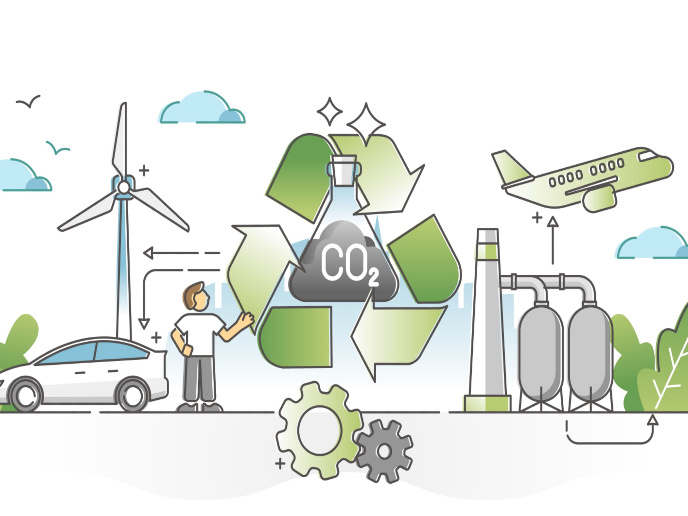Academia and industry collaborate over subsurface CO2 storage
Effective capture and storage of CO2 from the atmosphere requires close collaboration between academia and industry. Academic institutions possess experimental and analytical expertise in quantifying the rates and impacts of CO2-rich fluid-solid interactions, while industry excels in applying this work to CO2 injection in the subsurface. The EU-funded project CO2-REACT (Geologic carbon storage) brought together six academic and six industrial research teams, conducting a series of interconnected research initiatives focused on characterising the rates of reactions creating CO2-bearing minerals. Consortium members worked together with another EU-funded sister project CARBFIX to develop and demonstrate how to capture and rapidly store CO2 as a mineral formed in the subsurface. CO2-REACT combined observations of real rock cores with experiments exploring mineral fluid interactions to predict the fate and impact of CO2 once it was injected into the subsurface. Results were tested at the field scale at the CARBFIX pilot site in Hellisheidi, Iceland and on limestone and chalk cores. ‘We developed new technology that accelerated carbonation of CO2 in the subsurface by first dissolving the CO2 gas into water and then injecting it into the subsurface,’ says project coordinator Dr Eric Oelkers. ‘This had two advantages: firstly, CO2 charged water is denser than pure water, so it tends to sink. Secondly, the acidic CO2-charged water promotes reactions in the subsurface, specifically the dissolution of basalt, which in turn leads to the fixation of carbon as stable mineral phases,’ he explains. Safe and cost efficient Once it is made into a mineral the carbon is immobile over geologic time frames, representing a safe, long time solution for CO2 storage. Furthermore, economic studies show that this would cost in the order of 30-40 US dollars (USD) per ton, which is no more expensive than other less safe alternatives. ‘Results demonstrate the rapid carbonation of carbon injected into reactive basalt at an industrial scale. The original injection was shown to fix over 90 % of the injected 170 tons of pure CO2 as stable carbonate minerals in less than 18 months,’ reports Dr Oelkers. Researchers also developed and field tested novel gas membrane portable instruments for assessing the potential leakage of CO2 through caprocks to the surface. The results were used to calibrate computer models of CO2 transport to the subsurface. In addition, scientists developed improved 2-dimensional reactive transport models to predict the long term fate and consequences of the injection of CO2 into typical subsurface aquifers. Both models will help to ensure the long-term safe storage of CO2. ‘The technology developed during CO2-REACT provides a safe alternative for capturing and storing other acid gases, such as hydrogen sulfide, which may be a major application for our research,’ states Dr Oelkers. The project trained 13 researchers in mineral synthesis, geothermal energy, chemical modelling and gas and radioactive waste storage, emphasising the link between laboratory experiments and practical applications. This will help the next generation of scientists in academia, industry and government to address the challenges of carbon storage. Dr Oelkers concludes: ‘The wider academic community needs to understand the value of a strong collaboration with industry. Whereas academics can come up with and demonstrate ideas, it is only through industrial partners that one can upscale ideas to solve large problems’.
Keywords
CO2 injection, subsurface, carbon storage, CO2-REACT, CARBFIX







